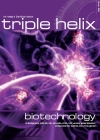In June 2005 the World Health Organisation released its final interim progress report on the 3 by 5 initiative.[1] Set up in 2003, this was an ambitious plan to get at least three million people in developing nations living with HIV & AIDS on to life-saving antiretroviral therapy (ART) by the end of 2005. By June, only 1 million were on treatment. In November 2005, Dr Jim Yong-Kim, the WHO Secretary General publicly apologised that the WHO had fallen so far behind target, admitting they simply had not done well enough.[2]
This is very bad news. Around six million people in the developing world need ART – many of them will die very soon without it, and many more will get ill and need therapy in the coming years. And this need is going to grow, not diminish. This failure has already costs many lives, and many more will die in the coming year.
WHO has increased by more than five times the number of poor people on ART since 2003. Lessons have been learnt, and they are getting better. However, they are a long long way from meeting the very real need that is out there.
The reasons are complex, but a lot is to do with a lack of basic infrastructure. Although more funding is needed for ART, nevertheless, many millions could be on ART now if money alone was the issue. The reality is that there are not enough doctors and nurses to deliver and monitor therapy. There are often not the mechanisms to train staff or volunteers, nor the correct the distribution or storage systems for these highly specialised drugs.
There is, however, a global network of organisations with local, national and international structures, able to help address some of these needs. It is called the Church, and WHO is desperate to engage with it. Churches can deliver drugs to people's homes through teams of trained volunteers, ensuring people are
keeping to their regimes, ensuring distribution networks work, linking people to hospitals (especially church run institutions), and acting as advocates for those living with HIV & AIDS. This is already happening, but not nearly enough.
The Body of Christ has a huge potential and the opportunity to save lives, showing the compassionate love of Christ to millions. If the WHO and others can only learn how to work with us, and if we learn how not to distrust or ignore the UN system, this could be one of the greatest opportunities of recent times for the church truly to influence the world. This is a kairos moment we can choose to ignore.
































